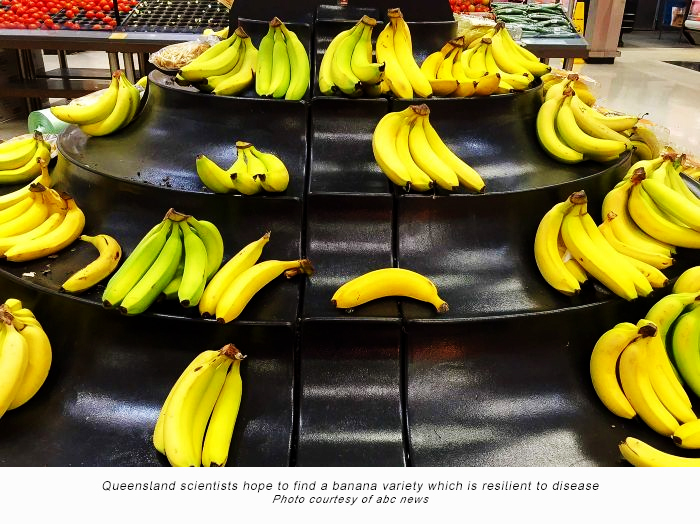by Jessica Hinchliffe, abc news
Queensland scientists are striving to develop new varieties to keep Australia’s most popular fruit on the menu for years to come.
More than five million bananas are eaten every day in Australia, making it the number one selling supermarket product.
The discovery of the soil-borne fungus Panama tropical race four (TR4) on a farm in north Queensland in 2015 sent shockwaves through the industry, prompting a swift response from biosecurity authorities to contain any potential spread.
As a result, scientists are putting an increased focus on research to find more disease-resistant varieties that can match the eating quality of the popular Cavendish.
Bananageddon threats overstated
Professor Andre Drenth from the University of Queensland’s Centre for Plant Science is part of a global research effort trying to find that perfect banana.
“There has been so many reports about bananageddon … I don’t think we will reach that,” he told 612 ABC Brisbane’s Kelly Higgins-Devine.
“The disease [TR4] is very aggressive on Cavendish but it can also affect other varieties like lady fingers that are also commercially grown.
“It’s not going to make them disappear, but the cost will go up.”
Professor Drenth said any new variety had to tick three boxes.
“That’s the trio we’re looking for but we don’t have at the moment.
“One approach is to go to Cavendish clones that have a level of tolerance, but that can only go so far.
“We have resistance already, but it’s in varieties that have low yield or have seeds in their flesh.”
The threat of Black Sigatoka, a leaf disease originally from Latin America, was also of concern to researchers.
“The Black Sigatoka disease is not in Australia,” Professor Drenth said.
“There was an incident in 2001 when it was in Tully but we managed to eradicate it.
Industry has ‘drastically changed’
Professor Drenth said farmers could not be complacent when it came to TR4.
“Our main worry is containing it in one of the wettest areas in Australia, and a cyclone could really change the way we look at this,” he said.
“As the growers tell you, before that event [TR4] there was sharing of machinery and visiting each other’s farms, but that has drastically changed now.
“More fences have also gone up since then and production chains have changed.”
Professor Drenth said the only solution to eradicating diseases like Black Sigatoka and Panama was for the industry to keep investing in research and development.
“We have to be continuously looking for the next solution for the next problem. We have to think ahead strategically.
“Once we have the resistant variety, it’s time to look for the next one.”
Source: abc news

